Rifles with top and bottom levers
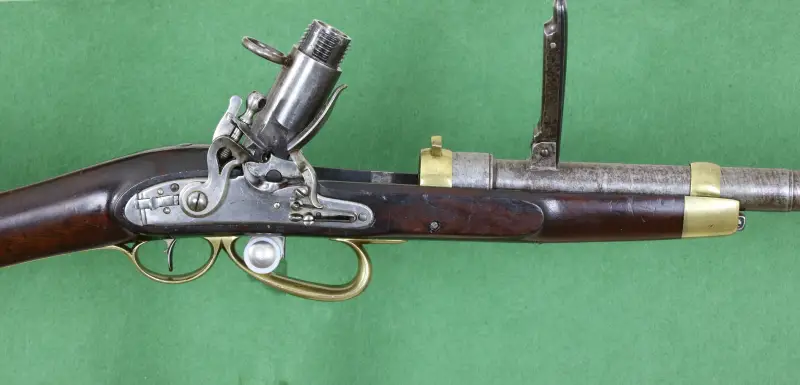
The Urbanus Sartorius carbine in the position before loading: the barrel is moved forward, the barrel handle is raised up, the charging chamber, which plays the role of a bolt, is raised up. Photo: cablesfarm.co.uk
Leviticus 26:10
stories about weapons. Let's start by turning to the words of the epigraph and remember that this advice does not always work, and that people are most often reluctant to throw away the old for the sake of the new. However, there are also those for whom the main thing is novelty. And who themselves are constantly working on something new and very willingly accept the innovations of others. Most often this happens at the turn of the era. When knowledge, certain experience and, of course, technology are accumulated. Then we can expect a surge of innovation and many new original proposals and technical solutions.

Sartorius carbine in the same position. View from above. Photo: cablesfarm.co.uk
It was exactly the same with weapons, in particular, at the very beginning of the 19th century, when Samuel Pauli (or Pauly) proposed his cartridge, and Alexander Forsythe came up with his “bottle” lock for firearms. Very soon, capsule systems appeared, but they still fired with old paper cartridges. They also retained the old problem of bullet “chatter” in the barrel, which is why the shooting accuracy from such smooth-bore guns was low. It was also inconvenient to load guns with long barrels. True, first in the English army, equipped with the Brown Bess musket, and then in others, it became fashionable to drive a bullet into the barrel by hitting the butt on the ground, without using a ramrod. However, this method was not suitable for cavalry, who had to load their carbines while sitting in the saddle. A system for loading their guns from the breech would be very useful to them, and such a carbine was created very soon.

Sartorius carbine in loading position. Side view. British Royal Arsenal, Leeds
It was proposed by Urbanus Sartorius, who patented his breech-loading system in 1817 and 1819. Moreover, it used the same old, time-tested flintlock. But the highlight of Sartorius’s design was the handle on the barrel and its locking mechanism, which later found application in... gun piston locks!
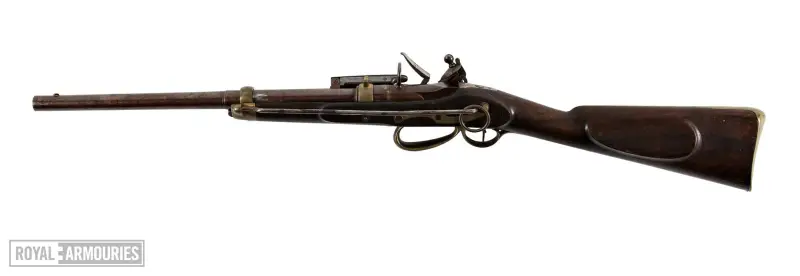
Sartorius carbine with a closed bolt. Side view. British Royal Arsenal, Leeds
However, connecting such a rather complex breech-loading mechanism to a flintlock or percussion gun was quite difficult, primarily due to problems with leakage of powder gases and clogging. Nevertheless, Sartorius carbines were produced, although the total number of copies produced is unknown. Their manufacturer was Anthony Bevan, a British industrialist who manufactured them from 1822 to 1825 at 16 Regent Street in London.

Sartorius carbine. Its flintlock is clearly visible. Photo: cablesfarm.co.uk
For that time, the design turned out to be quite original. The bolt was opened by rotating a handle attached to the barrel. Since the barrel had a sector groove, in which rifled and smooth sectors alternated, the barrel and the bolt, which was a charging chamber, became uncoupled. At the same time, the barrel itself moved forward along with the handle. But the bolt was lifted into a vertical position for loading by the ring on it. By design, it was a typical three-stroke gun breech, but in this case it was the barrel that was movable, not the breech. Moreover, the barrel could be completely removed from the forend. But this was not allowed to be done by a spring clamp, which controlled the degree of freedom of the barrel using a protrusion attached to the barrel. Pay attention to the beautiful brass handle in front of the trigger guard - in this place the carbine had perfect balance, so it was very comfortable to hold it by it. Apparently Sartorius was a good engineer if he thought about this too.
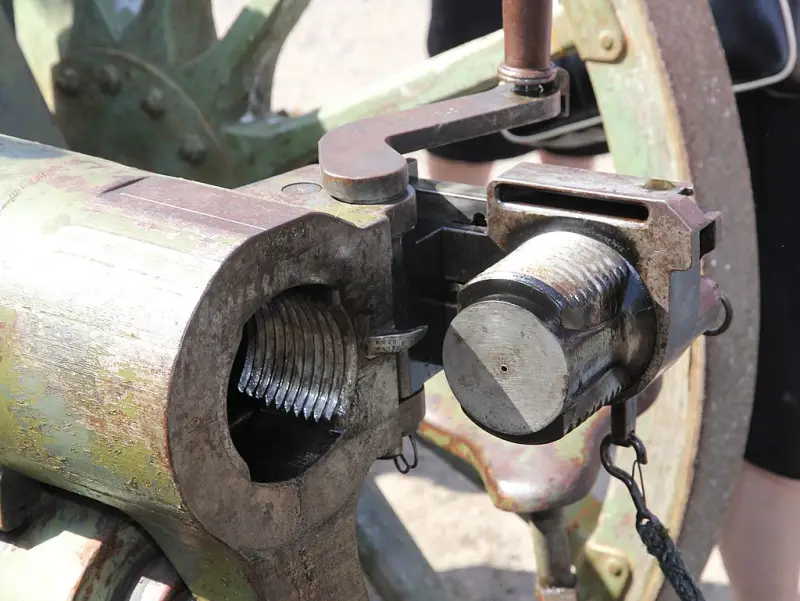
The bolt of a 76-mm cannon of the 1902 model. Very similar to the Sartorius shutter, isn't it?
Well, then everything was very simple. Gunpowder from the cartridge was poured into the charging chamber, after which a bullet, slightly larger than the caliber of the barrel, was inserted into it. Then gunpowder was poured onto the powder shelf, covered with a lid with a flint, after which the carbine was loaded. Moreover, due to the fact that the diameter of the bullet was greater than the diameter of the bore, the bullet from it, when riding on horseback with the barrel lowered down, as was required by the regulations, could not roll out under any circumstances. Well, thanks to this, the combat of the carbine was very strong and more accurate than that of guns in which the bullet entered the barrel freely. But, despite the fact that the carbine worked well, the British army did not accept it as an armament, pointing out the complexity of the design and ... gas breakthrough, even if only a small one, back.
And the gunsmiths of that time were very fond of piston bolts, which locked the barrel according to the “plug” principle, that is, they simply plugged it, and that’s all. This path was followed, for example, by the Belgian gunsmith Joseph Montignier from Fontaine-l'Evêque, who in the future became famous for creating an original buckshot. The rifle he created in 1835 fired paper cartridges and had a bolt controlled by a lever located on top.
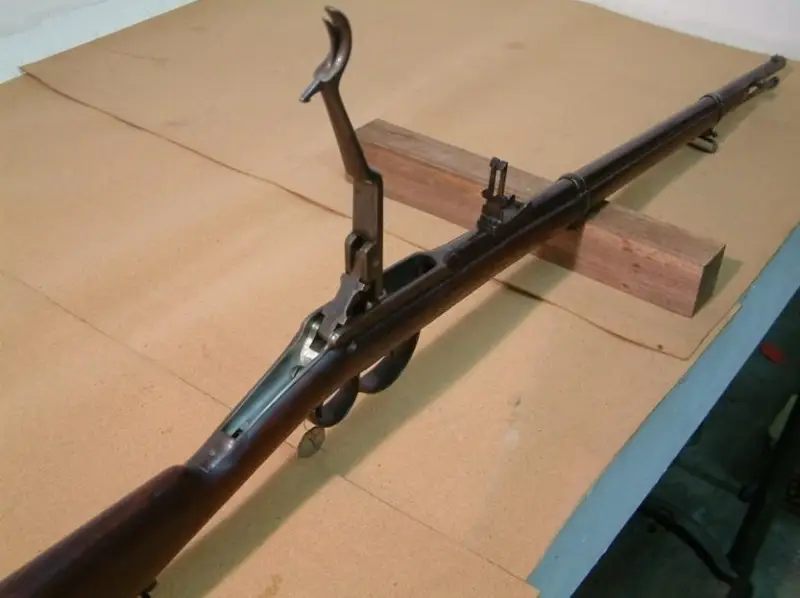
Model 1835 Montignier rifle with the bolt lever raised and the chamber open for loading. Photography by Alain Dobress
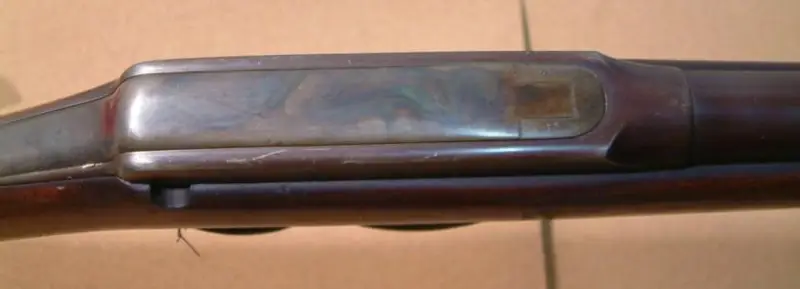
The Montignier rifle's bolt cover completely prevented dirt from getting into the receiver. But where is the trigger for the primer on it? And he was below! Photography by Alain Dobress
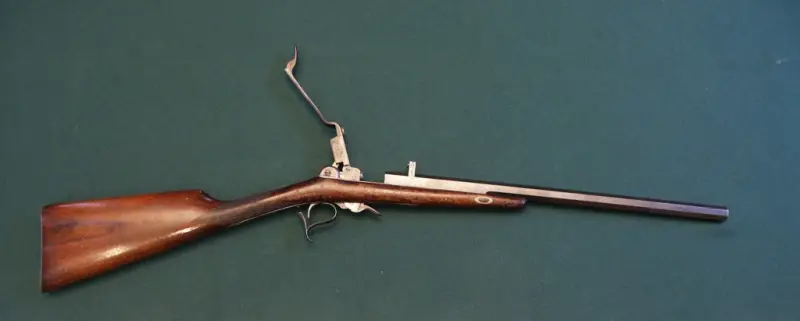
The Montigne-Fusno carbine looked roughly the same: the bolt lever was at the top, the trigger striking the primer was at the bottom! Photography by Alain Dobress
“Tailed”, that is, with a bolt lever placed on top of the stock, was also used by the British cavalry in 1855-1865. Westley Richards carbine, 11,6 mm caliber. It also had a primer ignition and a piston bolt controlled by a lever. For the characteristic shape of the lever, it was given the nickname “monkey tail”.
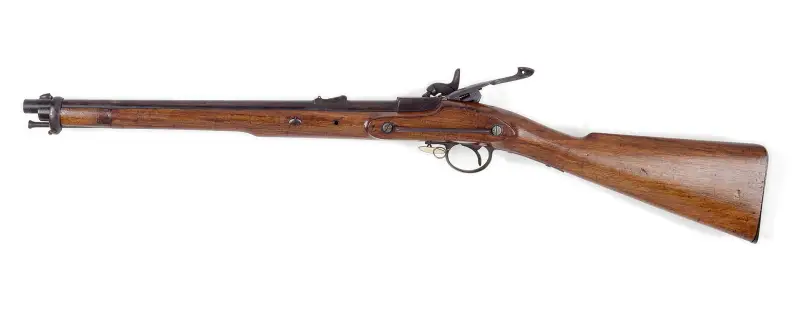
Westley Richards carbine, 1865, from the collection of... the British Library!
Of course, there was immediately a person who thought that exactly the same lever for the shutter could be placed below, under the stock! This is how the rifle of George Jamard from Liege appeared, in which the barrel also moved forward with a lever, releasing the chamber into which a paper cartridge was inserted.
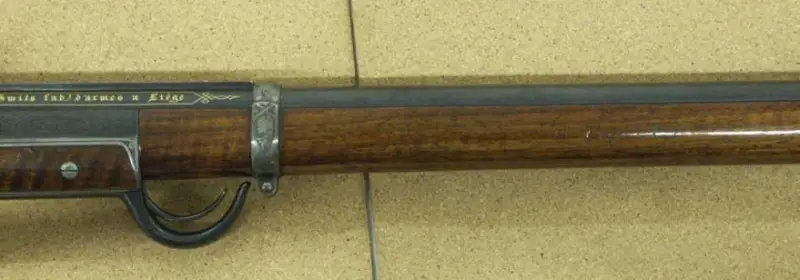
The photo shows the stock of a Zhamara rifle with a barrel control lever! Photography by Allen Dobress
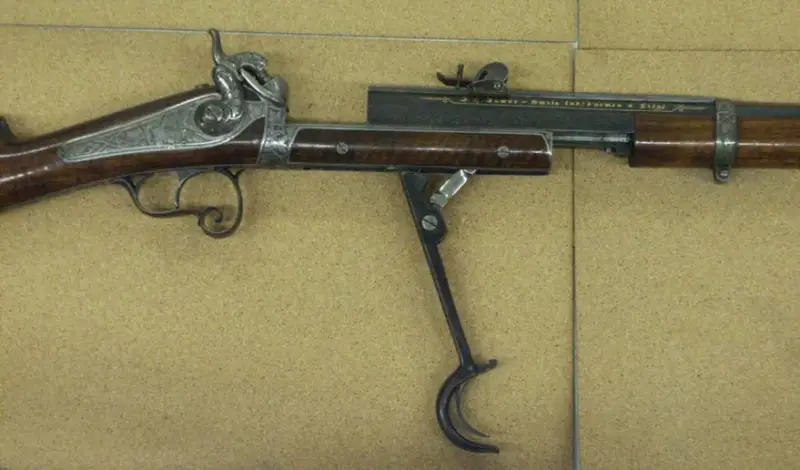
And here the same rifle is shown in close-up. The lever is pulled down, the barrel is pushed forward. Photography by Allen Dobress
However, the barrel can be pushed forward by turning it in the same way as on the Sartorius carbine. And on the Zhamard-Schmits rifle of Jean Henri, the barrel was made to extend forward by a handle attached to it, holding which, the shooter pushed it forward and at the same time turned it. Loading combined with locking occurred in the reverse order. The sight also slid along a guide plate onto which it was secured using a butterfly screw. Rifle caliber: 11x52R.

Jamara–Smits rifle. General form. Photography by Allen Dobress
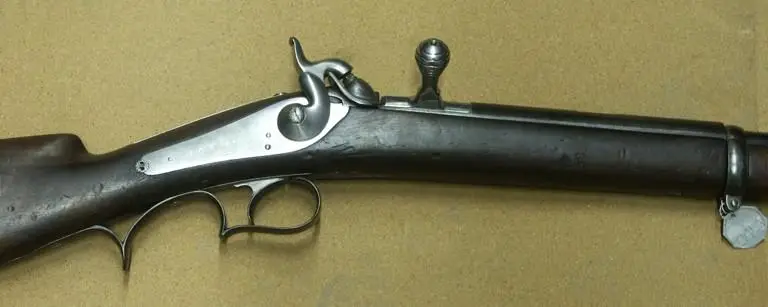
Jamara–Smits rifle. The barrel handle is on the right. The table is locked. Photography by Allen Dobress
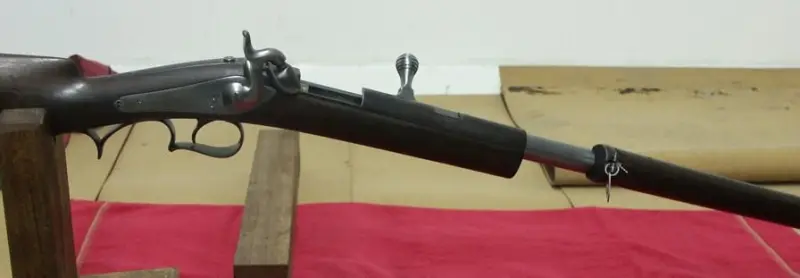
Jamara–Smits rifle. The barrel handle is on the left. The barrel, together with part of the stock, is pushed forward. Photography by Allen Dobress
In England, a rifle with a barrel that moved forward for loading with a paper cartridge was proposed in February 1855 by the London gunsmith Frederick Prince. But although it performed well in testing, it was also considered too complex for mass production.
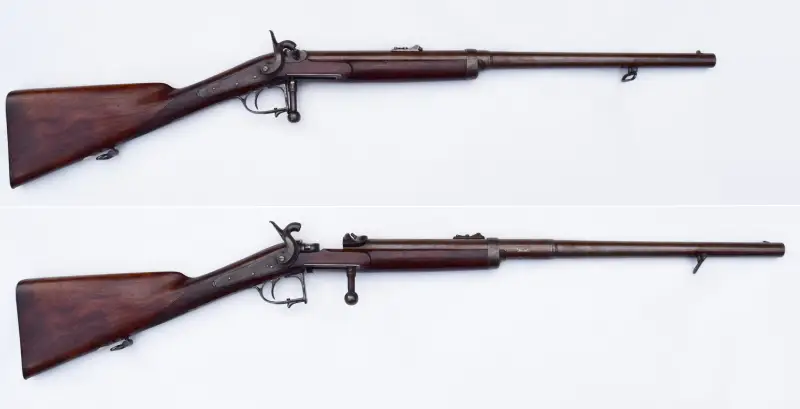
Frederick Prince carbine: top - with the barrel locked, bottom - in the loading position. Photo armorersbench.com
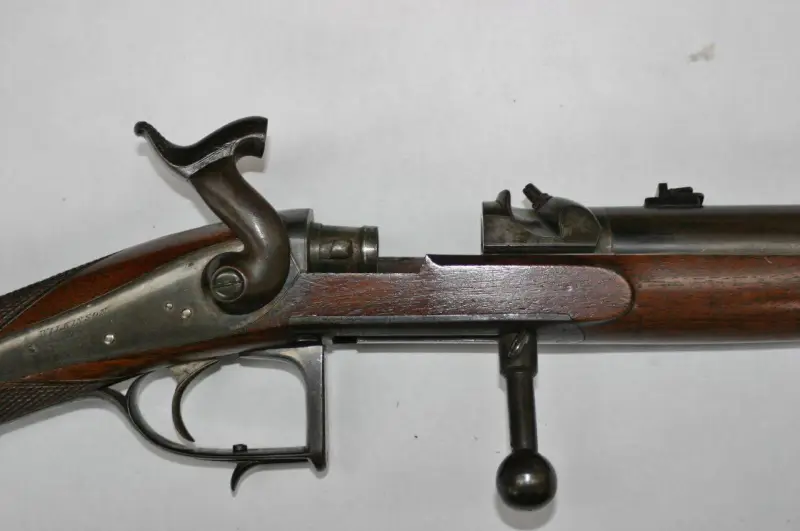
Close-up of the breech of the Frederick Prince carbine. Photo armorersbench.com
Around the same time, needle systems became very popular, especially in Germany. The first needle rifle, Johann Nikolaus von Dreyse, was adopted by the Prussian army in 1841.
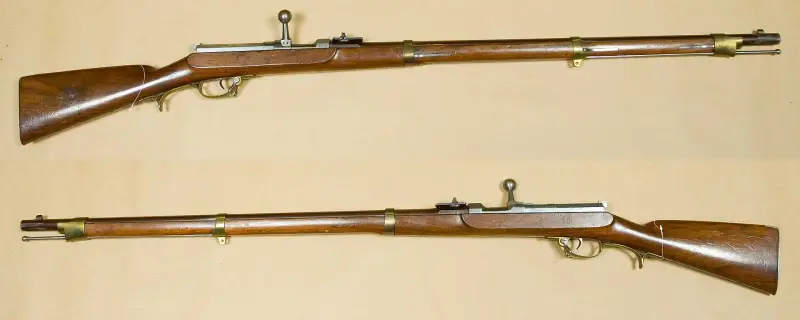
This is what this 1841 rifle looked like. Army Museum. Stockholm
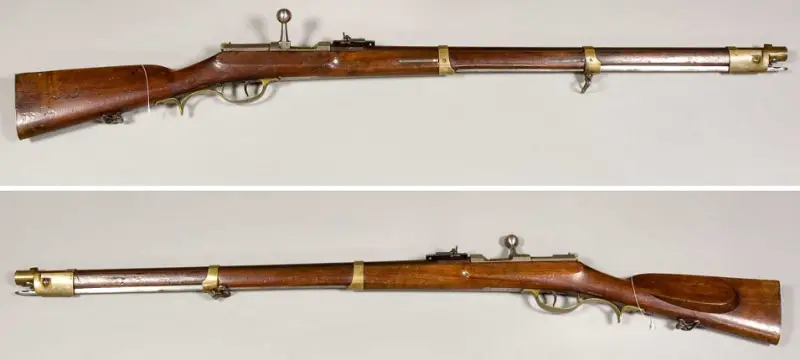
Dreyse rifle of the Jaeger battalions 1854. Army Museum. Stockholm
But it is clear that there were immediately people who wanted to make something better, more perfect out of it. In particular, a certain Georg Bitter tried himself in this field, in 1850 he offered his needle rifle to the Royal Württemberg Arsenal in Ludwigsburg, combining elements of Dreyse’s design with his own parts. The military considered it too complicated and impractical, but the arsenal still bought one rifle for the Württemberg weapons collection.
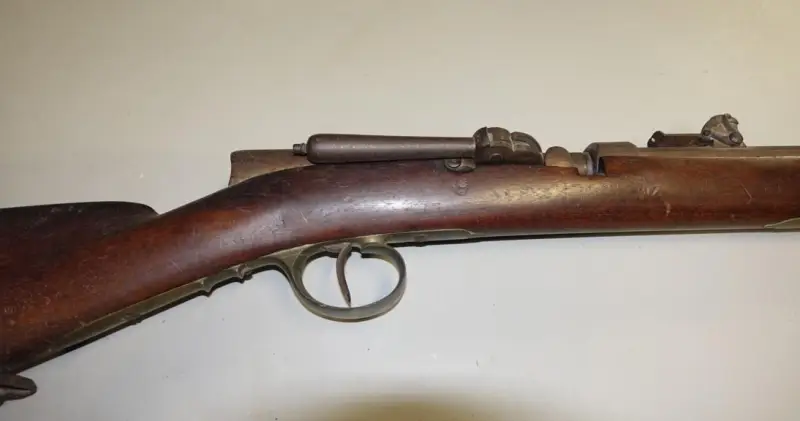
The bolt of Georg Bitter's rifle. The folded massive bolt handle is clearly visible. Photography by Allen Dobress
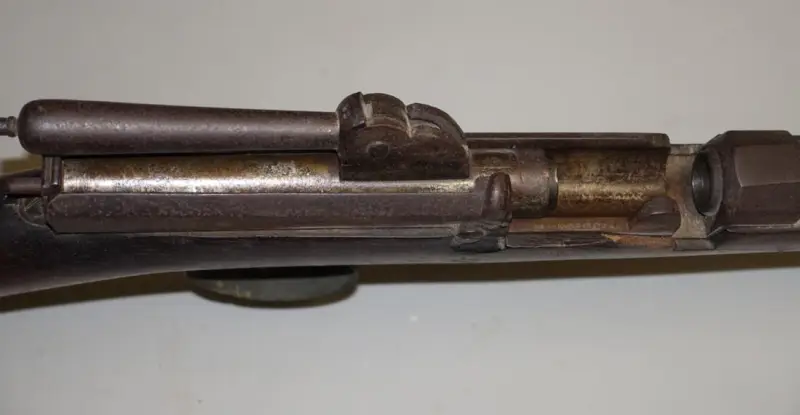
The shutter is open. The handle still lies along the bolt. Photography by Allen Dobress
So on the way to modern, perfect types of weapons, we can come across many highly original models, often in some ways ahead of their time!
Information